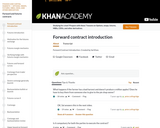
Forward Contract Introduction. Created by Sal Khan.
- Subject:
- Economics
- Social Science
- Material Type:
- Lesson
- Provider:
- Khan Academy
- Provider Set:
- Khan Academy
- Author:
- Sal Khan
- Date Added:
- 07/25/2012

Forward Contract Introduction. Created by Sal Khan.

This practicum focuses on applying the principles of sustainability to improve the quality of life and activity along the Foshan downtown riverfront. The City has recently engaged in several planning efforts that, with the help of consultants and experts, will help to identify strategies to revitalize the City’s center and establish a new downtown. This practicum will compliment these efforts by focusing on planning and design options in and around the Pearl River, a now underutilized waterway that runs through the City’s new downtown.
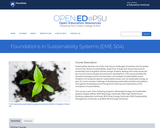
Sustainability denotes one of the main future challenges of societies and the global community. Issues of sustainability range from energy and natural resources to biodiversity loss and global climate change. Properly dealing with these issues will be crucial to future societal and economic development. This course provides the theoretical background for the discussion and analysis of sustainability issues. Students will recognize specific sustainability issues, such as sustainable energy, as part of a more complex challenge of developing sustainable societies and systems, and against the background of the general meaning and implications of the conception of sustainability.

This course explores the foundations of policy making in developing countries. The goal is to spell out various policy options and to quantify the trade-offs between them. We will study the different facets of human development: education, health, gender, the family, land relations, risk, informal and formal norms and institutions. This is an empirical class. For each topic, we will study several concrete examples chosen from around the world. While studying each of these topics, we will ask: What determines the decisions of poor households in developing countries? What constraints are they subject to? Is there a scope for policy (by government, international organizations, or non-governmental organizations (NGOs))? What policies have been tried out? Have they been successful?
MITx Online Version
This course is part of the Micromaster’s Program in Data, Economics, and Design of Policy through MITx Online. The course is entirely free to audit, though learners have the option to pay a fee, which is based on the learner’s ability to pay, to take the proctored exam, and earn a course certificate. To access the course, create an MITx Online account and enroll in the course 14.740x Foundations of Development Policy.
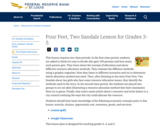
This lesson requires two class periods. In the first class period, students are asked to think of a way to decide who gets 100 pennies and how many each person gets. They learn about the concept of allocation and about different resource allocation methods. They evaluate the different methods using a graphic organizer. Next they listen to different scenarios and try to determine which allocation method was used. Then, after listening to the story Four Feet, Two Sandals about two girls who face some resource allocation issues, they identify the methods used in the story. In the second class period, the students are placed into groups to act out skits illustrating a resource allocation method that their classmates then try to guess. Finally, they read a news article about a resource and write letters to a city council outlining the ways the city could allocate the resource.
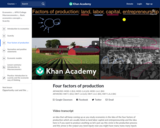
Economists traditionally divide the factors of production into four categories: land, labor, capital, and entrepreneurship. Land refers to natural resources, labor refers to work effort, and capital is anything made that is used to make something else. The last resource, entrepreneurship, refers to the ability to put the other three resources together to create value. In this video, we define each of the four factors of production and provide examples of each.
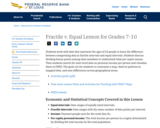
Students work with data that represent the ages of 24 people to learn the difference between categorizing data in fractile intervals and equal intervals. Students discuss dividing bonus points among class members to understand what per capita means. Then students search for state-level data on personal income per person and visualize them in FRED. The goals are for students to customize a map, observe patterns in mapped data, and note differences across geographical areas.
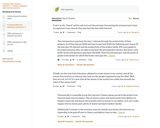
Understanding the weak points of Fractional Reserve Banking. Created by Sal Khan.

Urban governance comprises the various forces, institutions, and movements that guide economic and physical development, the distribution of resources, social interactions, and other aspects of daily life in urban areas. This course examines governance from legal, political, social, and economic perspectives. In addition, we will discuss how these structures constrain collective decision making about particular urban issues (immigration, education…). Assignments will be nightly readings and a short paper relating an urban issue to the frameworks outlined in the class.

Are you looking for FREE, semester-long economics, government, american history, and personal finance courses? If so, visit www.certell.org to download. Certell is an educational non-profit who's mission is to support and develop educational resources and technology that lower the cost of education and help individuals lead flourishing lives. We want to help schools and teachers thrive! All content meets national standards and most meet AP standards (when applicable).
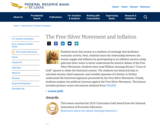
Students learn that money is a medium of exchange that facilitates economic activity. Next, students learn the relationship between the money supply and inflation by participating in an inflation auction using gold and silver notes to better understand the historic debate of the Free Silver Movement. Students then read William Jennings Bryan's "Cross of Gold" speech to relate the historical context. The students use historical data to calculate income, fixed expenses, and variable expenses of a farmer to further understand the historical argument presented by the Free Silver Movement. Finally, students analyze two political cartoons against the Free Silver Movement. This lesson includes primary source documents obtained from FRASER¨.

According to Prof. Don Boudreaux of George Mason University, free trade is nothing more than a system of trade that treats foreign goods and services no differently than domestic goods and services. In this video, Professor Boudreaux defines free trade and protectionism and provides real world examples of free trade.
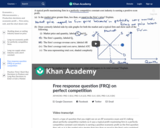
Walk through the solution to a free response question (FRQ) like the ones you may see on an AP Microeconomics exam. Topics include why price equals marginal revenue (P=MR) for a perfectly competitive firm, how to draw side-by-side market and firm graphs, and how to find several points of interest in the firm graph.

Prepaid cards were invented to solve a problem: replacing coin usage in pay telephones. Since then, prepaid cards have evolved into a huge competitive market for general-purpose reloadable (GPR) prepaid cards. Read more about GPR prepaid cards in the May 2015 inaugural edition of Page One Economics Focus on Finance.

Se aborda desde una perspectiva multidisciplinaria los desafíos contemporáneos en los campos de la legislación sobre drogas, la innovación pedagógica para la creación de spin-offs universitarios, el impacto económico del tecnoestrés en la productividad académica, y las tendencias evolutivas en las penas y su enfoque hacia la reinserción. A través de un análisis crítico de la legislación sobre drogas, el documento resalta la importancia de considerar la salud y la rehabilitación en lugar de la criminalización. Examina cómo la integración de empresas familiares en la educación universitaria puede fomentar la innovación y el emprendimiento. Destaca los costos ocultos del tecnoestrés en la productividad académica, subrayando la necesidad de estrategias de manejo. Finalmente, discute la evolución de las penas con un enfoque en la reinserción social como medio para mejorar la seguridad pública y reducir la reincidencia.
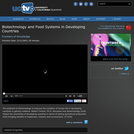
The potential of biotechnology to improve the condition of human life in developing countries is gaining credence. Robert Timmer, Ph.D. discusses how biotechnology could impact the economies of developing countries in terms of raising agricultural production while bringing benefits to healthcare, industry and environment. (28 minutes)
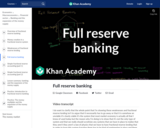
Overview of full reserve banking in comparison to fractional reserve banking. Created by Sal Khan.
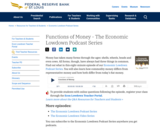
Money has taken many forms through the ages: shells, wheels, beads and even cows. All forms, though, have always had three things in common. Find out what in this eight-minute podcast. You will also learn how commodity money differs from representative money and how both differ from today's fiat money.

What does money actually do? Economists usually subdivide its functions into three categories: A medium of exchange, a store of value, and a unit of value. Created by Grant Sanderson.
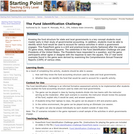
Knowing the fund structure for state and local governments is a key concept students must master early in their study of governmental accounting. In addition, students must be able to identify which fund would be used to account for various activities in which a government engages. This PowerPoint game is a drill and practice/review activity fashioned after the popular TV game show, Hollywood Squares. The celebrities in the Fund Identification Challenge are past Presidents of the United States. The Presidents have responded to a question, and the game participants either agree or disagree with the response to earn the square. The 27 real-world examples found in the game were derived by examining the Comprehensive Annual Financial Reports (CAFR) of various cities.